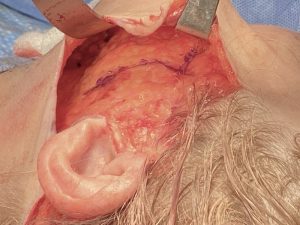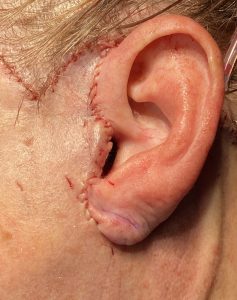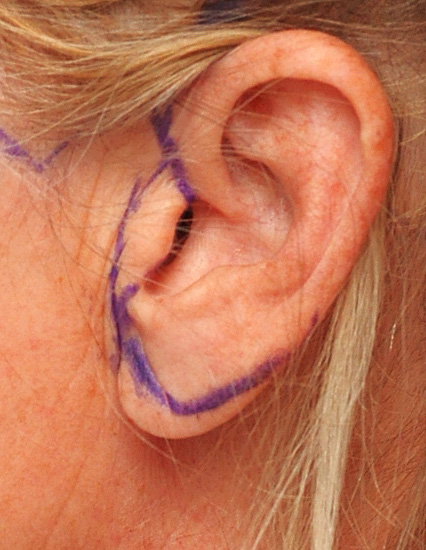
But regardless of the length of the ear incisions for a facelift, the earlobe is always encircled on its front and back sides. It subsequently becomes an important area of skin closure and can become the most visible indicator of having had a facelift if the scarring around it becomes visible or the earlobe becomes elongated from supporting the repositioned skin.
Unlike the rest of the ear, the earlobe has no structural support and is prone to undergo natural elongation. Gravity, age and ear ring wear are well known causes of it becoming longer. Thus the length/size of the earlobe is an important preoperative assessment before facelift surgery as tightening up the face but leaving a long earlobe is the antithesis of any anti-aging facial surgery.


This is a safe technique as, even though the blood supply is cut off from the earlobe from its facial skin supply, there is enough perfusion coming down from the ear to allow for uncomplicated healing.
Dr. Barry Eppley
Indianapolis, Indiana




